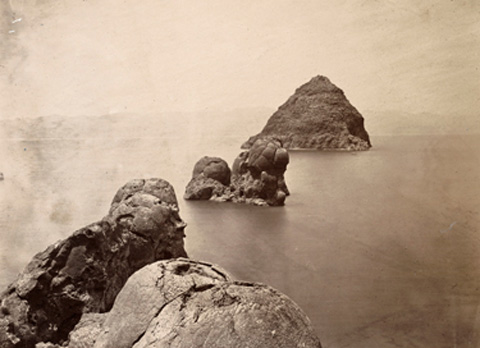This week, I thought I'd dig back into photography's past and look at one of my all time favorite photographers. Ansel Adams was my first influence as a photographer, but he was soon supplanted by Timothy O'Sullivan, Matthew Brady, Edward Muybridge, Carleton Watkins, and others (now that I've chosen to do a post on O'Sullivan, I'll likely do posts on the other afore mentioned photographers). I still remember thumbing through my History of Photography text book back in college at the beginning of the semester, and seeing the photograph below and thinking something along the lines of “Ah, an Ansel Adams photograph” and then looking at the caption and learning that it was actually made by O’Sullivan.
After that, I dug a little deeper into O’Sullivan’s work. I don’t really remember my initial impressions, or how soon afterwards he became one of my favorite photographers. And I’m not really sure there is a photograph of his that I would call my favorite. I think what impressed me first about O’Sullivan, and the other 19th Century landscape photographers was the incredible effort that was put into making their photographs. I loved imagining myself alongside them, a portable darkroom pulled behind a horse with hundreds of pounds of glass plates, hoping they don’t break along the journey, rushing to make an exposure before the collodion dried.
O'Sullivan started his photographic career as a Civil War photographer, apprenticed under Matthew Brady, then after the war worked as the photographer for several Survey Expeditions in the West.
I’ve always found the choices O’Sullivan made to be intriguing. He never made the obvious choice when making his compositions, even when working during the Civil War. He had a sensitivity to the landscape that I still envy.
You can read more about O'Sullivan and view more of his work at the Smithsonian American Art Museum's website.





